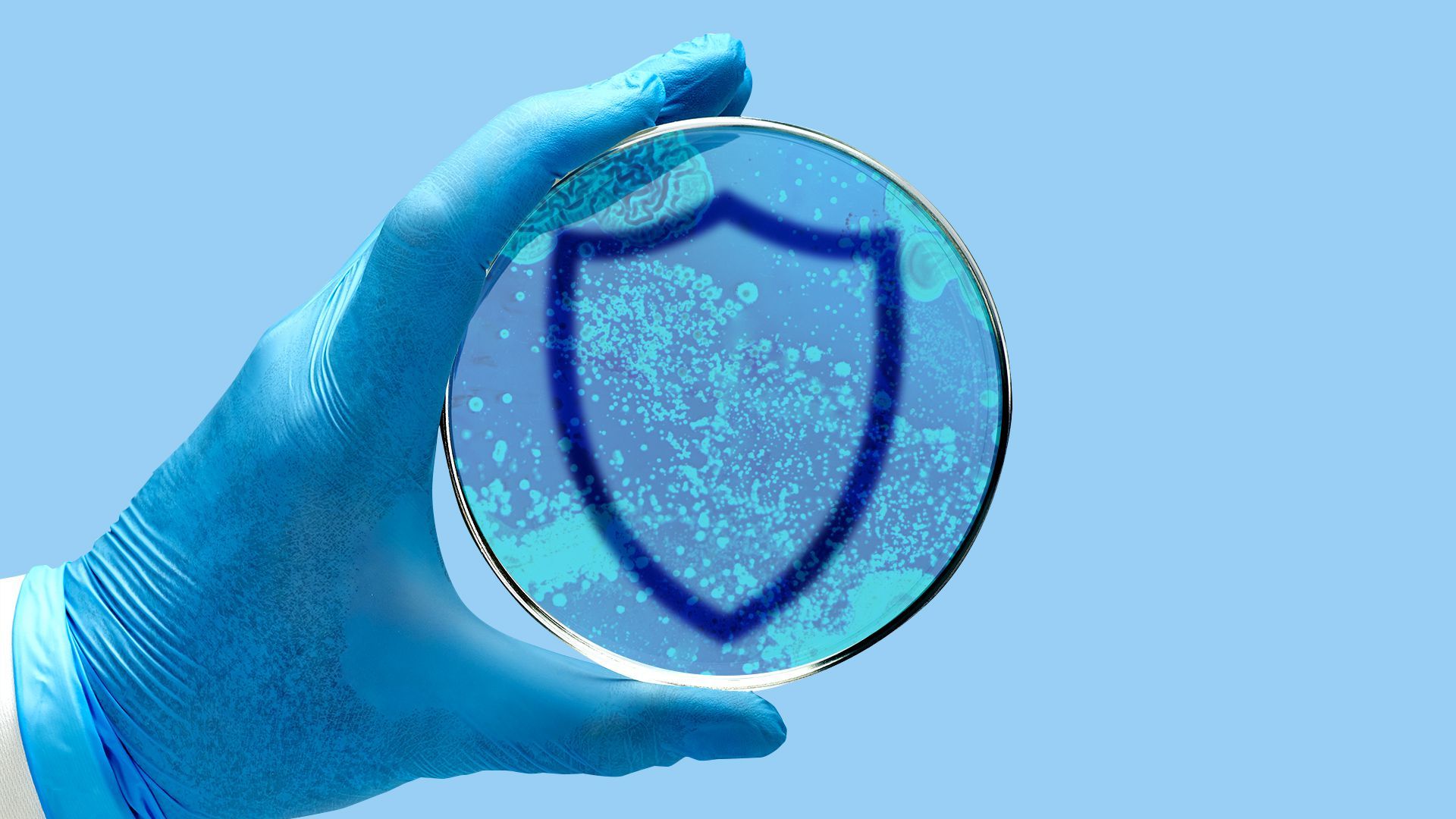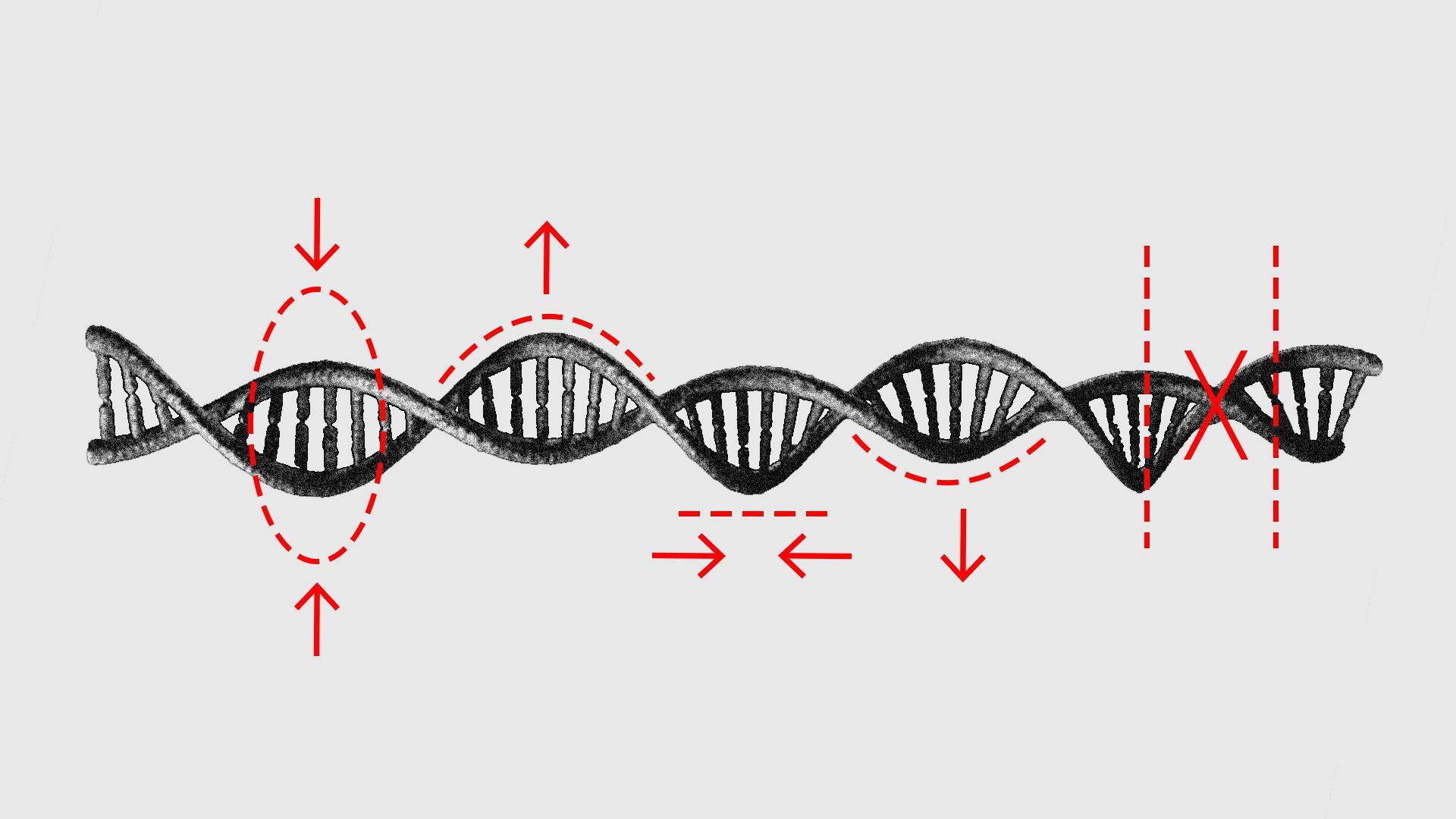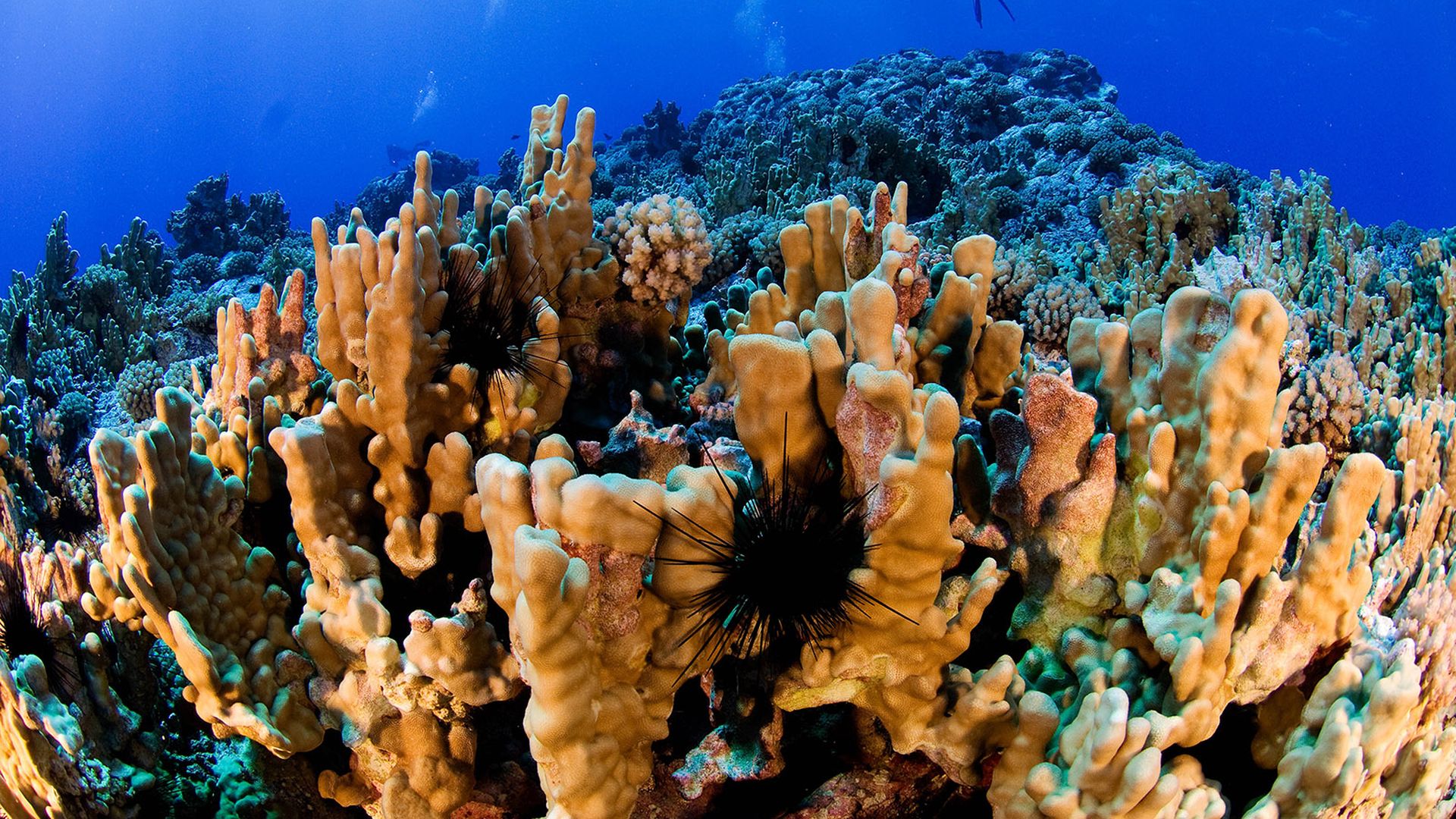| | | | | | | | | | | Axios Science | | By Alison Snyder ·Jul 01, 2021 | | Thanks for reading Axios Science. This week's newsletter — about the threat of invasive fungal infections, gene editing in the body, dwarf stars and more — is 1,5555 words, a 6-minute read. | | | | | | 1 big thing: The threat of drug-resistant, invasive fungi |  | | | Illustration: Aïda Amer/Axios | | | | Large numbers of COVID-19 hospitalizations and more immunocompromised people in general are fueling a global spread of a different threatening microbe: invasive fungi. Why it matters: These infections cause more than 1.6 million deaths worldwide every year, and the microorganisms responsible for them are starting to evade the small supply of antifungal drugs, Axios' Eileen Drage O'Reilly reports. "Out of all the [hospitalized] people who have gotten bacterial infections, 5% will die from those infections. And that's a lot. ... When it comes to life-threatening fungal infections, 50% of those patients will die from that infection. And that message really isn't being told." — Ciara Kennedy, former president and CEO, Amplyx Pharmaceuticals The newest emerging microbe threat is the growing number of invasive fungi that normally attack a large number of immunosuppressed people like, COVID-19 patients in India, but can sometimes infect healthy people as well. - Exact numbers of fungal infections are unknown, as they are "often underdiagnosed or misdiagnosed," says Tom Chiller, chief of the CDC's Mycotic Diseases Branch.
There are only three main classes of drugs to fight invasive fungal infections. What's happening: Invasive fungi — ones that lead to severe and systemic infection — are a growing concern, Chiller says. - Drug-resistant C. auris can kill people, and some strains are becoming resistant to all three classes of antifungals. Plus, it often doesn't respond to traditional ammonia cleaners, and contaminated surfaces have caused some nursing homes, long-term care facilities and hospitals to rip out entire units.
- "And it's really transmissible — more like a bacteria than a fungus. We don't think of candida or candidemia as a contagious disease in a hospital, but now we need to because of this new species Candida auris," Chiller says.
What to watch: The FDA recently approved the first new class of antifungal drugs in 20 years — although it's not for invasive disease, Chiller says. But, he adds he's "excited" there may be new drugs soon that target invasive fungal disease using new mechanisms. - A bipartisan bill, the PASTEUR Act, could also help bolster the drug pipeline.
Read the entire story. |     | | | | | | 2. Smallest, most massive white dwarf discovered |  | | | Artist's illustration of a white dwarf star and the Moon. Image: Giuseppe Parisi | | | | A newfound white dwarf star 130 light-years away is the most massive and smallest ever discovered, according to a new study. Why it matters: The star — thought to be the result of two white dwarfs smacking into one another and merging — can act as a laboratory for astronomers to learn more about how extreme objects in the universe evolve, Axios' Miriam Kramer writes. What they found: The new study in the journal Nature suggests the white dwarf — named ZTF J1901+1458 — is about the size of the Moon but has a bit more than the mass of the Sun packed into it. - It likely formed when two stars in a binary system burned through their fuel and became white dwarfs that eventually merged with one another.
- Sometimes, those mergers can create supernova explosions if the two stars are massive enough, but in this case, the white dwarf appears to be teetering right on the edge of being massive enough to explode.
- "We caught this very interesting object that wasn't quite massive enough to explode," Ilaria Caiazzo, an author of the new study, said in a statement. "We are truly probing how massive a white dwarf can be."
The intrigue: The scientists behind the study don't think the star is likely to explode now, but its fate is still unclear. - It's possible the white dwarf is massive enough to eventually collapse into a neutron star, according to the scientists.
- Usually these types of dead stars form after supernova explosions, but if this white dwarf is a progenitor to a neutron star, there could be many more like it out there.
The bottom line: One day, our Sun will burn through its fuel and eventually become a white dwarf. By learning more about these objects, scientists are ultimately also investigating the fate of our star and solar system. |     | | | | | | 3. Catch up quick on COVID-19 |  | | | Illustration: Annelise Capossela/Axios | | | | The Delta variant of SARS-CoV-2 is raising questions about the need for booster shots, Axios' Caitlin Owens writes. And it is causing confusion about mask guidance, per Axios' Marisa Fernandez. Mixing the type of COVID-19 vaccines administered appears to boost the immune response to the virus, but "more extensive trials and long-term monitoring for side effects are sorely needed," Dyani Lewis reports for Nature News. Two researchers are proposing editing the genome of bats to make them immune to coronaviruses and to stop spillovers to humans and future pandemics, Erika Check Hayden reports for STAT. |     | | | | | | A message from Axios | | Go deeper on the biggest story of the day. | | |  | | | | Listen to Axios Re:Cap each weekday afternoon. Host Dan Primack and his guests — newsmakers and breakers — unpack the headlines remaking our world and work. Get smarter on the biggest story of the day and why it matters in just 10 minutes. Listen for free. | | | | | | 4. CRISPR milestone pushes gene editing toward its promise |  | | | Illustration: Rebecca Zisser/Axios | | | | The gene editing system CRISPR-Cas9 can be injected into the blood and directed to the liver to treat patients with a rare condition, according to a recent study. Why it matters: The ability to edit genes directly in a patient's body expands the list of possible diseases and conditions researchers can try to target with CRISPR-based therapies. Driving the news: Preliminary but promising results from a small trial in six people indicate a one-time CRISPR-Cas9 treatment led to a decrease in the misfolded protein that causes the condition transthyretin amyloidosis (ATTR). - ATTR occurs when the abnormal protein is produced in the liver and then builds up on tissues, primarily nerves and the heart.
- The levels of protein dropped an average of 87% in three people who received a higher dose of the therapy in a Phase I trial, researchers at Intellia Therapeutics and Regeneron reported last weekend in The New England Journal of Medicine.
- Existing ATTR treatments can reduce protein by 80% but have to be administered regularly.
The trial results don't yet indicate whether symptoms of the disease are alleviated, and trial participants are being monitored for any side effects from the treatment. The big picture: CRISPR therapies are being developed and studied for a range of diseases and conditions. - One approach, in which cells are removed, edited and put back into the body, is being studied to treat people with sickle cell anemia, but it is expensive and involves bone marrow transplants.
- Another uses viruses or virus-like particles to deliver the editing machinery into the body and is being investigated to treat a hereditary blindness disorder.
- Similar to some COVID-19 vaccines, the new study uses lipid nanoparticles to deliver mRNA instructions for a person's cell to produce the enzyme that cuts the DNA so the gene is inactivated and the abnormal protein is no longer produced. Unlike a virus vector, the mRNA doesn't stay in the body.
But delivering the gene editing system to some cells without it being degraded remains a challenge for the field. - In the ATTR trial, the target was cells in the liver, which acts as a filter and readily picks up the nanoparticles, whereas other cells, for example, in the brain, present a difficult barrier to foreign materials, says Intellia CEO John Leonard.
- Ideally, a solution can be developed that has the virus' ability to more easily enter cells and the nanoparticles' short-lasting nature, he says.
What to watch: Intellia is looking at whether the mRNA approach could be applied to treat sickle cell anemia and eliminate the need for bone marrow transplants. - They're also interested in whether the system can be used to produce proteins lacking in diseases like hemophilia and for alpha-1 antitrypsin deficiency that underlies inherited emphysema.
|     | | | | | | 5. Worthy of your time | | Northwest "heat dome" signals global warming's march (Andrew Freedman — Axios) UAE spacecraft captures images of Mars' auroras (Kenneth Chang — NYT) Vaccine made of live malaria parasites shows early success (Heidi Ledford — Nature News) An atomic clock that could revolutionize space travel just passed its first test (Maria Temming — Science News) |     | | | | | | 6. Something wondrous |  | | | Lobe coral (Porites lobata) photographed for National Geographic Pristine Seas Project at Scott Reef, Salas y Gómez Island, Chile, 2011. Photo: Enric Sala/National Geographic | | | | Underwater mountain ridges off the coast of Chile and Peru are home to a high number of species found nowhere else on Earth, according to a new study. Why it matters: Most of the Salas y Gómez and Nazca ridges in the southeastern Pacific Ocean fall outside national waters in high seas in need of protection, the researchers write. - The largely unexplored region is threatened by climate change, overfishing and the possibility of deep-sea mining.
- But the deep sea reefs are currently healthy, making it "a really good time to protect a place like this," says Alan Friedlander, lead author of the study in the journal Plos One and chief scientist for National Geographic Pristine Seas.
- "They're incredible for their diversity but also for their fragility," he says.
What they found: Using video and images collected with deep sea autonomous cameras in 2011 and 2013, the team of researchers identified more than 120 species of corals, shrimp, fish, sponges and other organisms at depths between 650 feet and almost 5,000 feet. - Some have been recorded only in the region, including a deep-dwelling moray eel (Gymnothorax bathyphilus) and a rare neon-colored damselfish (Chromis mamatapara).
- They found "deep water sponges and corals that can live hundreds if not thousands of years" and support the biodiversity of this unique niche, Friedlander says.
The big picture: "We think of the bottom of the ocean as fairly lifeless, but yet there are rich gardens of life in the bottom habitat here." |     | | | | | | A message from Axios | | Go deeper on the biggest story of the day. | | |  | | | | Listen to Axios Re:Cap each weekday afternoon. Host Dan Primack and his guests — newsmakers and breakers — unpack the headlines remaking our world and work. Get smarter on the biggest story of the day and why it matters in just 10 minutes. Listen for free. | | |  | | It'll help you deliver employee communications more effectively. | | | | | | Axios thanks our partners for supporting our newsletters. If you're interested in advertising, learn more here.
Sponsorship has no influence on editorial content. Axios, 3100 Clarendon Blvd, Suite 1300, Arlington VA 22201 | | | You received this email because you signed up for newsletters from Axios.
Change your preferences or unsubscribe here. | | | Was this email forwarded to you?
Sign up now to get Axios in your inbox. | | | | Follow Axios on social media:    | | | | | |
Post a Comment
0Comments